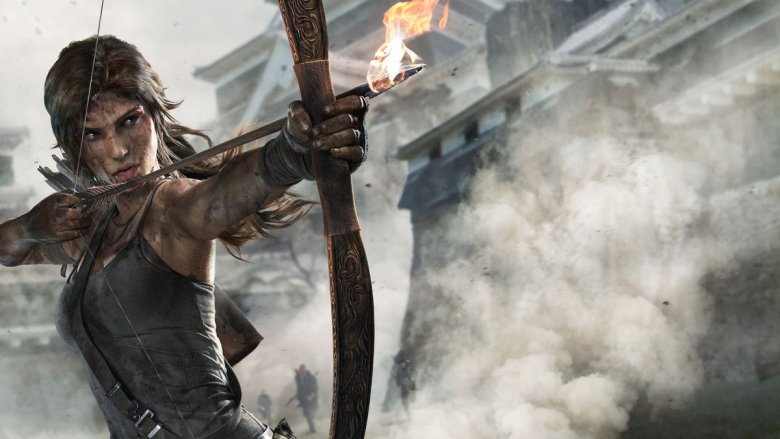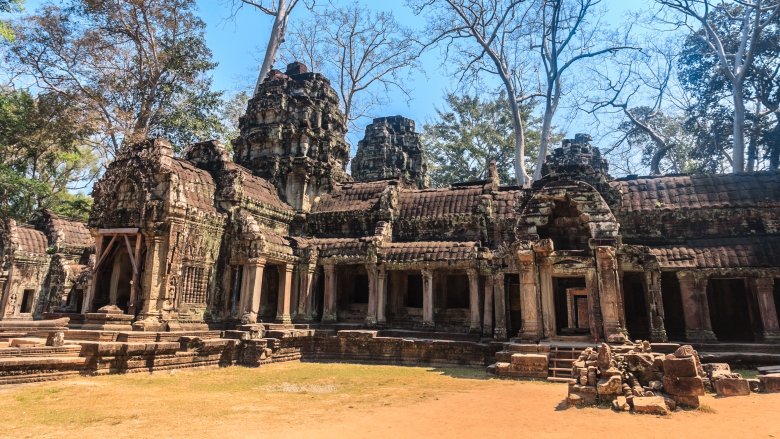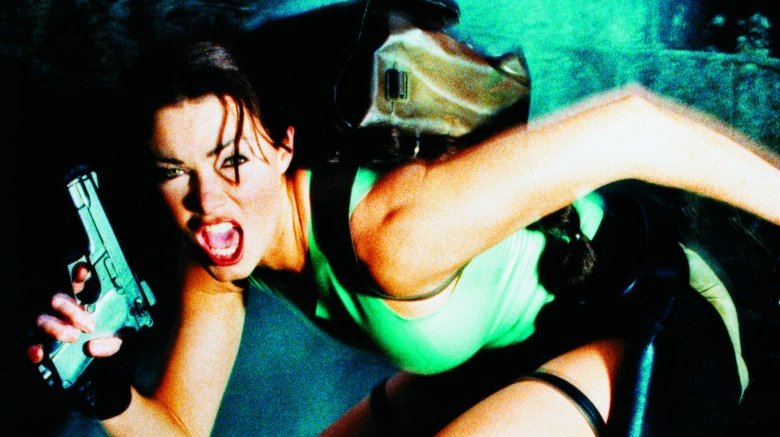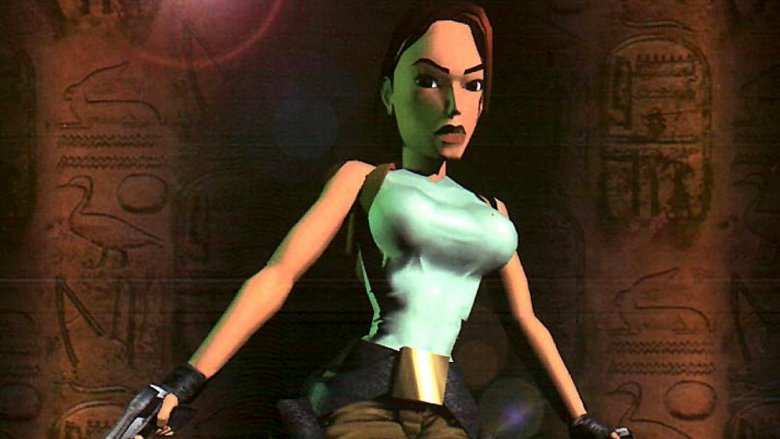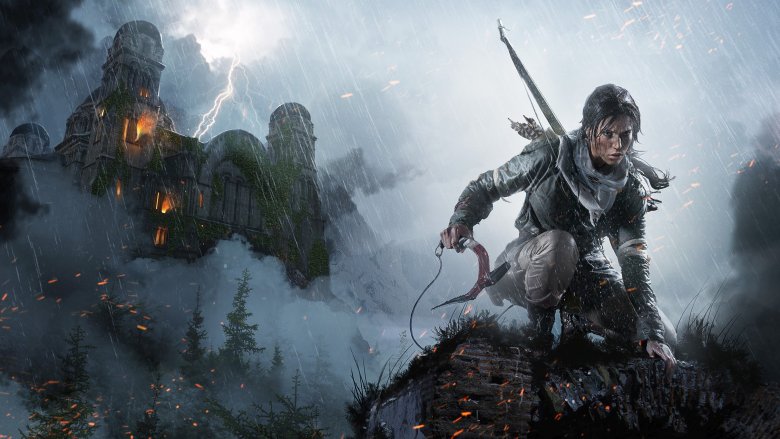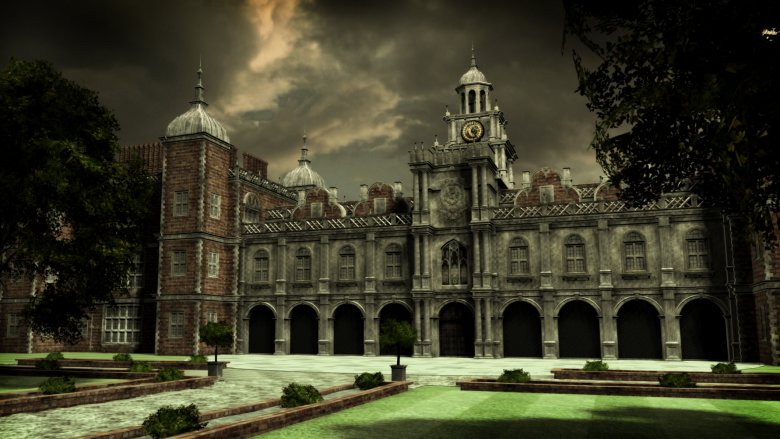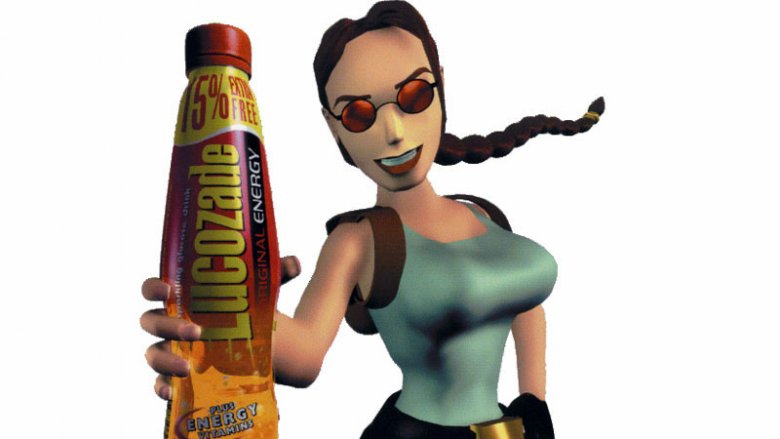The Untold Truth Of Tomb Raider
Few video game series have enjoyed the kind of sustained popularity, critical acclaim and cross-media popularity as the Tomb Raider franchise — and series mainstay Lara Croft is considered one of the most immediately recognizable and widely known characters of the entire medium. Still, that doesn't mean there aren't secrets lurking in the history of the game and the character. Join us as we chronicle some of the more unusual and lesser known facts about the franchise, and the hero who's come to define it. This is the untold truth of Tomb Raider.
Real-life training
For years after the release of the first Tomb Raider game in 1996, there was an official model tasked with physically portraying Lara Croft for media events and promotional material. You'd assume that standing around looking cool would be a fairly easy gig, but as the popularity of the series — and Lara Croft — grew, so did the expectations on the models tasked with playing everyone's favorite gun-toting archaeologist.
For example, when Karima Adebibe was hired to play Lara in 2006, she had to take combat lessons so she looked comfortable holding Croft's trademark firearms; she was also taught to ride a motorbike, and took elocution lessons so she could speak with Lara's impossibly posh British accent. The same is true of the model who replaced Adebibe in 2008, Alison Carroll. In addition to learning everything Adebibe did, Carroll received survival training from the SAS and was given a crash course on archaeology so she could comfortably speak with authority about Croft's job.
Lara Croft the science gal
The fact that Lara Croft spends much of her time backflipping through the woods shooting tigers with a submachine gun in her earlier games often belies the fact that, within the context of the Tomb Raider universe, she's an amazingly intelligent individual. Eager to acknowledge this (and no doubt cash in on the success of the series), in 1998 British science minister Lord Sainsbury made Croft an ambassador for British scientific excellence.
Lord Sainsbury's justification for nominating Lara over someone, well, real was that her appointment was more metaphorical than anything. Noting that Croft was nominated for the position due to her status as one of the most visible representatives of the burgeoning British video game industry, he explained, "We have a quarter of the world's market for computer games produced in this country, and I think we should be proud of that."
Unsurprisingly, Lara Croft never issued a statement about her appointment, but a representative from Tomb Raider lab Core Design did note that they were very flattered.
Jolie's temple
Although the 2001 live-action Tomb Raider movie was generally panned by critics, Angelina Jolie's take on the character of Lara Croft was widely acknowledged as the best part of the entire film. Jolie's performance was especially popular with Cambodian fans, who decided to rename a temple used for a location shoot the Angelina Jolie Temple in her honor. It's worth noting that not everyone uses the temple's new name — some locals refer to it as simply "The Tomb Raider Temple" instead, as both a nod to the film and as a way to entice tourists to visit.
Speaking of tourists, as late as 2010, bars around the temple were still selling a special "Tomb Raider Cocktail" made from Cointreau, lime and soda. When asked about the origins of the cocktail, restaurateurs told The Guardian that during filming Jolie would order the drink to cool off, so they just named it after her character.
A Playboy scandal
Famously protective of the character they created, Core Design were once granted a unique injunction in the United Kingdom when Nell McAndrew, the model they'd hired to physically portray Lara Croft, posed nude for Playboy in 1999.
McAndrew's decision, in and of itself, wasn't that big a deal. the problem was that Playboy decided to advertise the issue using imagery from the Tomb Raider games and advertised that the issue featured what teenage boys had wanted to see for years: Lara Croft naked.
Core Design argued that Playboy had no right to use their character this way and pleaded with a judge to do something about it, arguing that Croft's "squeaky-clean image" would be forever ruined if the issue was printed. Rather than have the issue recalled, a special injunction was granted to have all references to Tomb Raider in the magazine covered up with stickers. McAndrew, meanwhile, was fired by Core Design after the dust settled.
Female gamers love Lara
According to the six-person team that created the original Tomb Raider game, the decision to make the protagonist a woman was initially somewhat unpopular due to the pervasive opinion at the time that teenage boys and men (the target demographic of games back then) wouldn't want to play as a woman — even if she was a kickass archeologist with twin handguns and a penchant for traveling via backflip.
To everyone's surprise, Lara proved to not only be exceedingly popular with gamers of either gender. In fact, according to one early report, as many as 40 percent of early Tomb Raider players belonged to the fairer sex, with many women reporting that it was both refreshing and exciting to see their gender represented.
Lara Croft's original name
The earliest drafts for the character of Lara Croft described her not as a young British heiress, but a mercenary/explorer of South American descent with a degree in snapping necks from the school of life and a Ph.D. in Archaeology from Oxford. According to Toby Gard, who created the character, this tough, no-nonsense heroine was originally supposed to be called Laura Cruz.
According to Core Design co-founder Jeremy Heath-Smith, execs at Eidos — Core's parent company at the time — loved the character, but they weren't exactly enthusiastic about her name. Heath-Smith expanded on this in the book Grand Thieves & Tomb Raiders: How British Video Games Conquered the World, explaining that Eidos' American marketing department kept pronouncing the name "Laura" as "Laah-ra" and upon being corrected repeatedly, insisted that "Americans don't say Laura."
Heath-Smith also noted that the marketing department disliked the character's surname "Cruz," allegedly because it was too foreign-sounding to market to an American audience. Rather than try to think of a new name, the team just read candidates from a phone book at random until they found one they all liked. The name chosen? You guessed it: Lara Croft.
The Crofts aren't hurting for cash
Most incarnations of Lara Croft describe the character as an immensely wealthy member of the British aristocracy — and usually noted as the sole heir of a fabulous fortune. In addition to inheriting a giant mansion (pictured above), a bulletproof butler, and her own off-road racing track, some versions of Lara are said to supplement their income by writing tell-all books or selling the stories of her adventures to movie studios. In the recent reboot of the franchise, Lara is noted as being independently wealthy because of her family and name, though not to the extent she was in earlier games.
So how rich is Lara Croft? Well experts analyzing Croft's palatial estate, Croft Manor, and comparing it to real-life locations have surmised that the house alone in some games is worth over 40 million pounds. In 2013, Forbes went one step further and took into account all of Croft's potential sources of revenue and came to the conclusion that she's conservatively worth in excess of $1.3 billion — making her, by their estimation, wealthier than the guy from Monopoly.
Back to school
Shortly before the British release of the live-action Tomb Raider movie in 2001, the royal Gordonstoun school in Scotland was given special, one-time permission to use Lara's likeness to advertise themselves for free. As an idea of the value of this gift, consider that a few years earlier, soft drink manufacturer SmithKline Beecham paid the company several million pounds for the same privilege.
So why did Eidos let the school use their most valuable piece of intellectual property for free? According to Tomb Raider lore, Lara Croft was a pupil at the royal Gordonstoun school, with the institution credited for sparking her love of adventure and exploring. The company explained that a deal was reached to allow the school to use Croft's image to advertise itself as a thank you for never making a big deal about them using their name all these years — and for being so accommodating when footage for a documentary about Croft was filmed on their grounds.
Lara Croft, pop star
To a lot of Tomb Raider fans, model Rhona Mitra is Lara Croft. In addition to physically playing the character for several years in the late '90s, Mitra expressed disappointment that she wasn't cast to play Lara in the 2001 live-action movie and went so far as to have breast augmentation surgery so her figure was more in line with the character's at the time.
Mitra decided to use her stint as Lara to try and launch a music career, releasing a single called "Getting Naked" along with lending her voice to two albums in character — meaning they're all technically credited to Lara Croft. Unsurprisingly, these songs represent Lara's only attempt thus far to break into the world of music — which makes sense, since she probably has her plate full raiding all those tombs.

